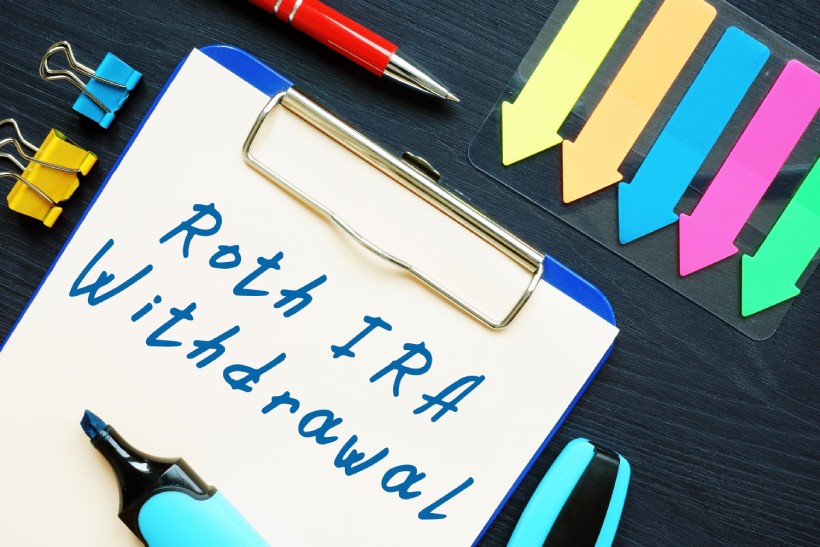Roth IRAs are a popular retirement savings option, thanks to their tax-free growth potential and flexible withdrawal rules. In 2024, it’s important to know the Roth IRA withdrawal rules so you can take full advantage of the benefits these accounts offer. Understanding these rules will help you avoid unexpected penalties and taxes. This blog will break down everything you need to know about Roth IRA withdrawals, including when you can access your funds and how to avoid costly mistakes.
What Makes Roth IRA Withdrawals Different?
The main appeal of a Roth IRA is the way your money grows. Contributions to a Roth IRA are made with after-tax dollars, meaning you don’t get a tax break on the money you put in. However, the real benefit comes when you withdraw your money. Unlike traditional IRAs, withdrawals from a Roth IRA are tax-free, provided you meet certain conditions. That said, some rules govern when and how you can take out money without facing penalties or taxes.
Roth IRA Withdrawal Rules IRS Overview
To make qualified withdrawals, the Roth IRA withdrawal rules IRS lays out two key conditions you must meet: age and account holding period. Specifically, you must be at least 59½ years old, and your Roth IRA must have been open and active for a minimum of 5 years. If these conditions are met, you can withdraw both your contributions and earnings without having to pay taxes or penalties.
Qualified vs. Non-Qualified Withdrawals
A qualified withdrawal from a Roth IRA is one that meets the IRS criteria: it’s taken after you turn 59½ and after the account has been open for at least five years. When you make a qualified withdrawal, both your contributions and your earnings are tax-free.
A non-qualified withdrawal, on the other hand, doesn’t meet these criteria. In this case, you may owe taxes and penalties on the earnings portion of your withdrawal. However, you can always access the contributions you’ve made to the Roth IRA without penalty since you’ve already paid taxes on those funds.
How To Avoid Taxes and Penalties
To avoid taxes and penalties, make sure you meet the Roth IRA withdrawal rules IRS requires. If you want to avoid the 10% early withdrawal penalty, you need to be at least 59½ years old and have held the Roth IRA for at least five years. If you don’t meet these conditions but still need to withdraw funds, focus on taking out only the contributions you’ve made. Since you’ve already paid taxes on those contributions, they can be withdrawn at any time, tax-free and penalty-free.
Roth IRA Withdrawals After Age 59½
Once you reach the age of 59½, you can take withdrawals from your Roth IRA without facing the 10% penalty, even if the account has been open for less than five years. However, to avoid taxes on the earnings, the Roth IRA must have been open for at least five years. If you haven’t reached the five-year mark, the earnings portion of the withdrawal will be subject to taxes, but you will not face a penalty.
This rule applies regardless of how old you are when you take the withdrawal. The five-year holding period applies only to the earnings portion of the Roth IRA, not the contributions you made. As mentioned, you can always access your contributions tax- and penalty-free at any age.
Roth IRA Withdrawal Rules for Small Business Owners
If you’re a small business owner, you may have set up a Roth IRA to save for retirement. The rules for withdrawing from your Roth IRA are the same as for individual account holders. However, it’s important to keep track of your contributions and withdrawals to avoid any potential tax liabilities. The IRS Roth IRA withdrawal rules apply to all account holders, regardless of whether you’re an individual or a business owner.
Small business owners may also benefit from setting up a separate retirement account, such as a SEP IRA or SIMPLE IRA, to take advantage of different tax benefits. These accounts have different withdrawal rules and contribution limits, so it’s worth consulting with a financial advisor to determine the best strategy for your retirement savings.
Working with Nevada Trust Company
For business owners and individuals alike, managing retirement savings and understanding the tax rules for Roth IRAs can be complex. At Nevada Trust Company, we work closely with our clients to ensure they have the resources and knowledge they need to make smart financial decisions. Our experienced team can guide you through the intricacies of retirement planning, including Roth IRA rules, and help you make informed decisions about your financial future.
The Roth IRA withdrawal rules in 2024 are straightforward, but it’s important to understand the specifics to avoid unnecessary penalties or taxes. By following the rules and knowing when and how you can withdraw your funds, you can ensure that your Roth IRA remains a valuable tool for retirement savings. If you’re unsure about your withdrawal options or need help navigating the rules, don’t hesitate to reach out to a trusted financial advisor.
To learn more, you can always contact us at Nevada Trust Company.






